Butterflies and Catch Me If You Can Class 1 Notes English Mridang
| Table of contents |

|
| The Cap-seller and the Monkeys |

|
| Butterflies |

|
| Catch Me If You Can |

|
| Learning Basic Concepts - Up and Down, In and Out |

|
The Cap-seller and the Monkeys
Introduction to the Story
This is a simple and fun story about a cap-seller and a group of mischievous monkeys. It teaches a lesson about using your brain to solve problems.
Summary of the Story
Main Character:
The story is about a man who sells caps. He is called the cap-seller. He carries a basket full of caps on his head and goes around selling them.
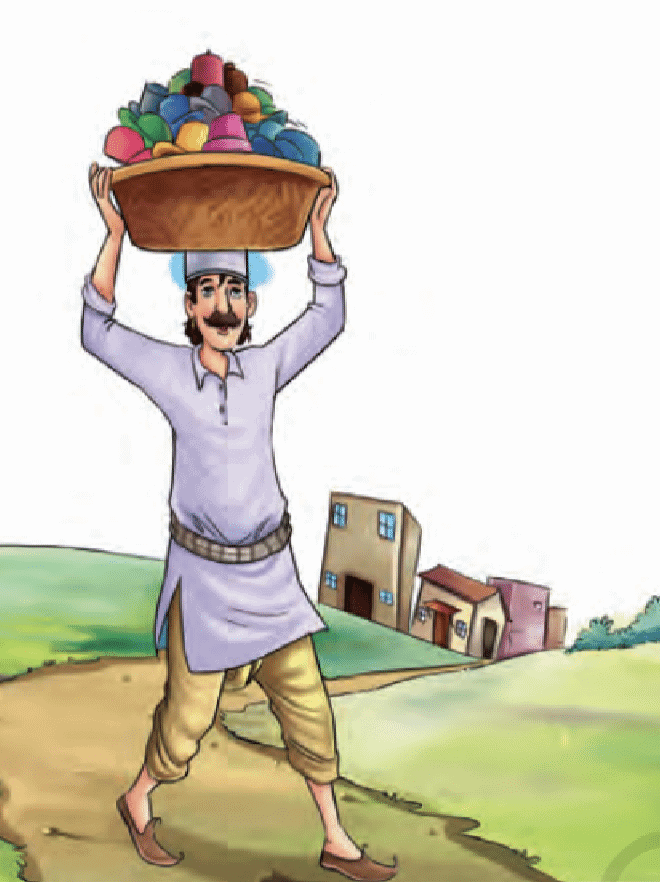
The Problem:
One day, while the cap-seller was travelling, he felt tired and decided to take a nap under a big tree. While he was sleeping, some naughty monkeys from the tree came down, and each monkey took one of the caps from his basket.
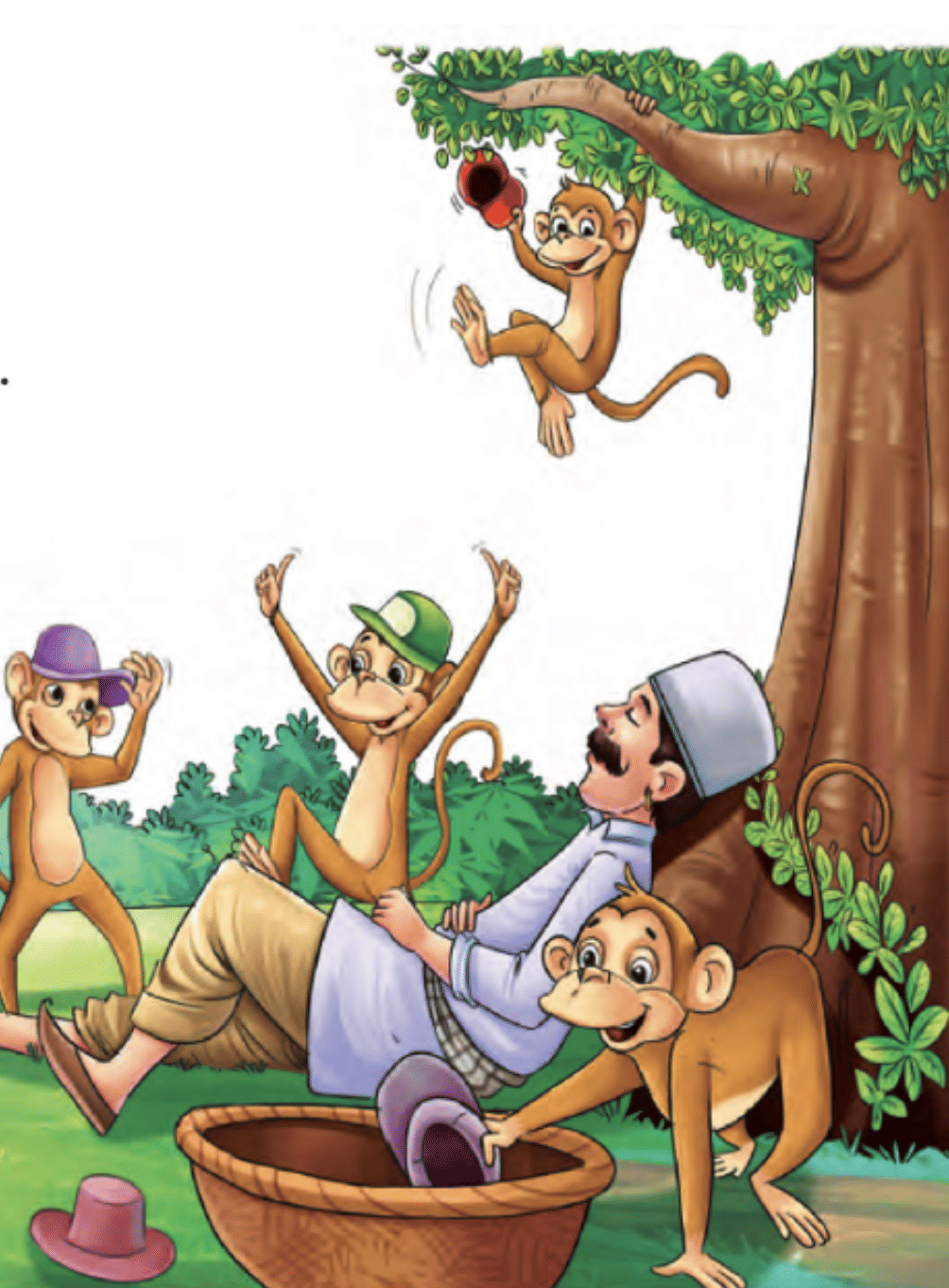
The Surprise:
When the cap-seller woke up, he found his basket empty! He looked around and saw the monkeys sitting on the tree wearing his caps.What Happens Next:
The cap-seller was angry. He shook his fists at the monkeys, and the monkeys copied him and shook their fists too. Then, he scratched his head, and the monkeys did the same.The Clever Idea:
The cap-seller thought of a clever idea. He took off his own cap and threw it into the basket. The monkeys, being copycats, also threw their caps into the basket.
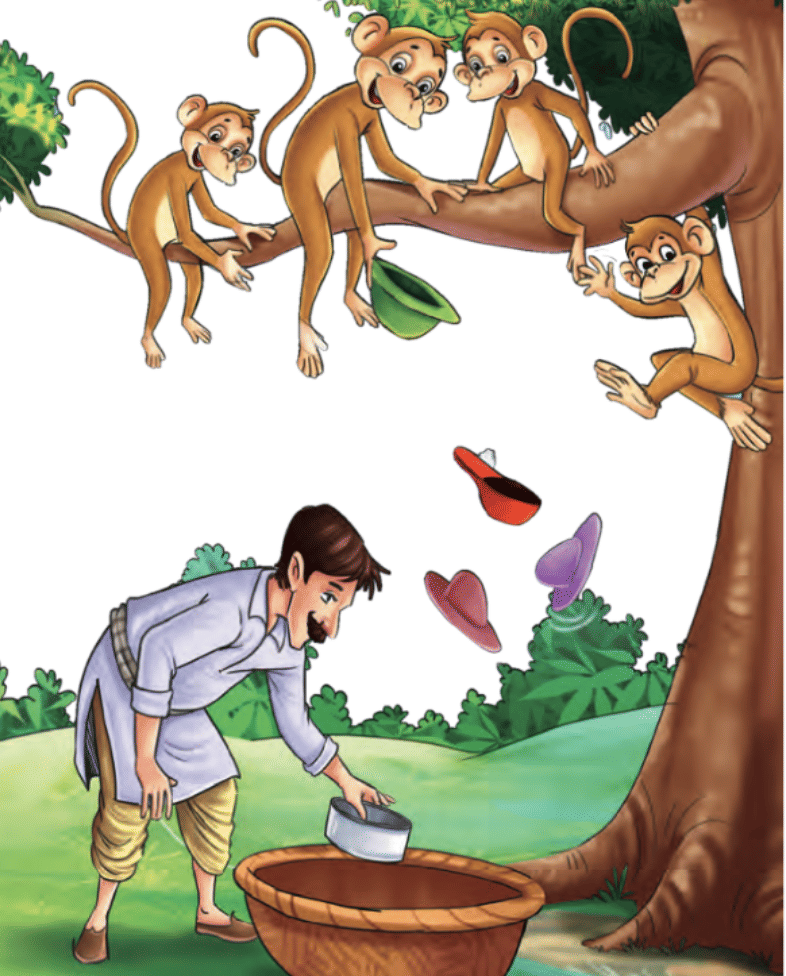
The Happy Ending:
The cap-seller got all his caps back and happily went on his way.
Characters
- The Cap-seller: A man who sells caps and is very smart.
- The Monkeys: Naughty monkeys who like to copy what the cap-seller does.
Important Lessons from the Story
- Problem-Solving: The cap-seller used his brain to get his caps back instead of fighting or being sad. This shows us that thinking calmly can help solve problems.
- Imitation: The monkeys copied everything the cap-seller did, which made it easier for him to trick them and get his caps back.
- Being Clever: Sometimes, we can solve problems in simple, smart ways rather than using anger.
Key Words
- Cap-seller: A person who sells caps.
- Monkeys: Animals that live on trees and love to imitate.
- Basket: Something used to carry things. The cap-seller carried his caps in a basket.
- Empty: When nothing is inside something. The basket was empty when the monkeys took the caps.
- Imitate: To copy someone. The monkeys imitated the cap-seller.
Butterflies

Summary
This poem is about butterflies flying around. It describes how they go up, down, in, and out. It's like a little dance they do in the air.
Explanation
The poem talks about butterflies and their movements. It's like a game of hide-and-seek where the butterflies go up, down, inside something, and outside again. It's a fun way to imagine how butterflies move around.
New Words and Difficult Word Meanings
- Butterflies: Colorful insects that fly.
- Up: Going higher.
- Down: Going lower.
- In: Going inside something.
- Out: Coming outside from something.
Theme
The theme of this poem is the playful and joyful movement of butterflies. It's like they are playing a game in the sky.
Did You Know?
- You can replace the word 'butterflies' in the poem above with many other things - like birds, monkeys, and what not!
- Have a look at the poem below:

Catch Me If You Can
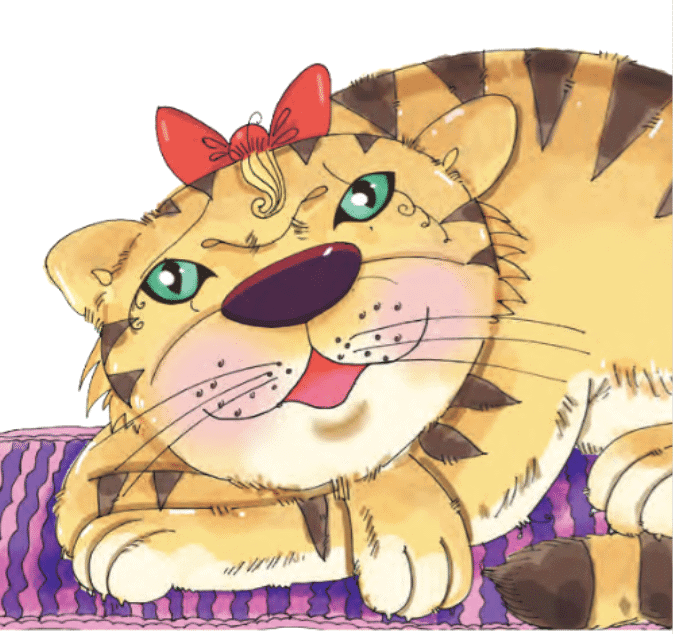
Summary
This poem is about a fat cat trying to catch a little rat. The rat cleverly hides in different places, and in the end, the cat can't catch the rat.
Explanation
In this poem, there's a cat who wants to catch a rat. But the rat is very smart and hides in different things like a hat and a box. The cat tries to catch the rat but fails, and in the end, the rat laughs at the cat because it couldn't catch him.
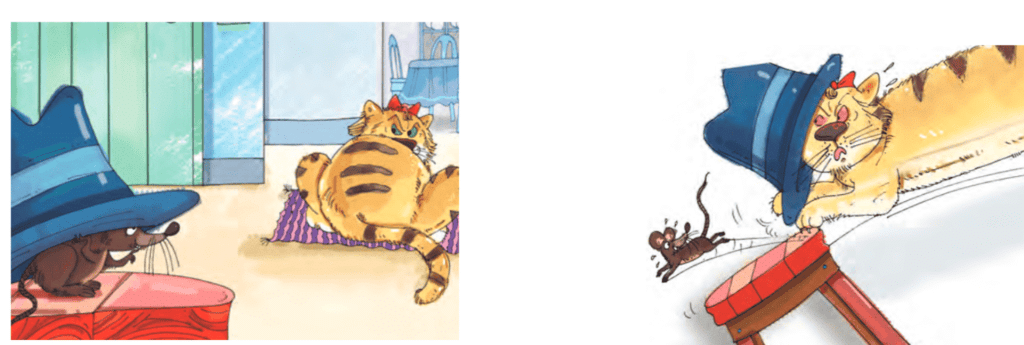

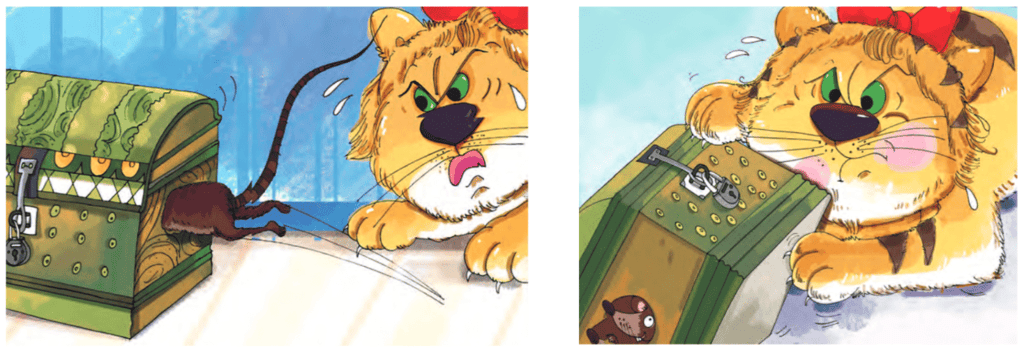
New Words and Difficult Word Meanings
- Fat: Big and round.
- Mat: A piece of fabric you put on the floor.
- Rat: A small animal that looks like a mouse.
- Hid: Went to a secret place where no one could see.
- Lid: The cover of a box or container.
- Cleverly: Doing something smart or tricky.
Theme
The theme of this poem is about being clever and using your wits to outsmart someone who's trying to catch you. It's a fun story about a clever little rat.
Learning Basic Concepts - Up and Down, In and Out
Introduction
In our exciting journey of learning, we will explore some simple yet important concepts that will help us understand the world around us better. Today, we will learn about two pairs of opposite concepts: "Up and Down" and "In and Out."
Up and Down
Up means going higher or towards the sky, while Down means going lower or towards the ground. These words help us understand the direction of things.
Examples:
Up: When you jump off a small step, you go up into the air and then come back down to the ground.
- Activity: Try jumping up and down on the spot. How high can you go?
Down: When you play with your toys and put them on a shelf, you are putting them up on the shelf. When you take them off the shelf, you bring them down.
- Activity: Arrange your toys on a shelf and then take them down one by one.
In and Out
In means to go inside or into something, while Out means to come outside or out of something. These words help us understand where things are located.
Examples:
In: When you put your hand inside your pocket, your hand goes into the pocket.
- Activity: Put a small toy in a box. Can you put your hand in the box to take it out?
Out: When you take your shoes off, you are taking them out of your feet. And when you wear them, you are putting them on your feet.
- Activity: Practice taking your shoes on and off.
Conclusion
Understanding the concepts of "Up and Down" and "In and Out" helps us describe where things are and how they move. These are important ideas that will make learning about the world around us more fun and interesting. So keep exploring and learning, little friends!|
27 videos|168 docs|34 tests
|
FAQs on Butterflies and Catch Me If You Can Class 1 Notes English Mridang
| 1. What is the main theme of the story "The Cap-seller and the Monkeys"? |  |
| 2. How do the butterflies in the story symbolize freedom? |  |
| 3. What lesson can be learned from "Catch Me If You Can"? |  |
| 4. How do the stories in the chapter help in understanding basic concepts like up and down, in and out? |  |
| 5. What are some key characteristics of the cap-seller in the story? |  |















